In the shown ,two blocks one of mass 5kg and the other of mass 2kg are connected by light and inextensible string Pulleys are light an d frictionless Choose the correct statement
 .
.
The acceleration of 5kg mass is 5g11ms−2
The acceleration of 2kg mass is 5g11ms−2
Tension in the string is 12g11N .
Tension in the string is 10g11N .
The correct Answer is:B, C
5T−5g=5a1…(1)
2g−T=2a2….(2),5a1=a1….(3)
5T−5g=a2,10g−5T=10a25g=11a2
a2=5g11ms−2a1=g11ms−2
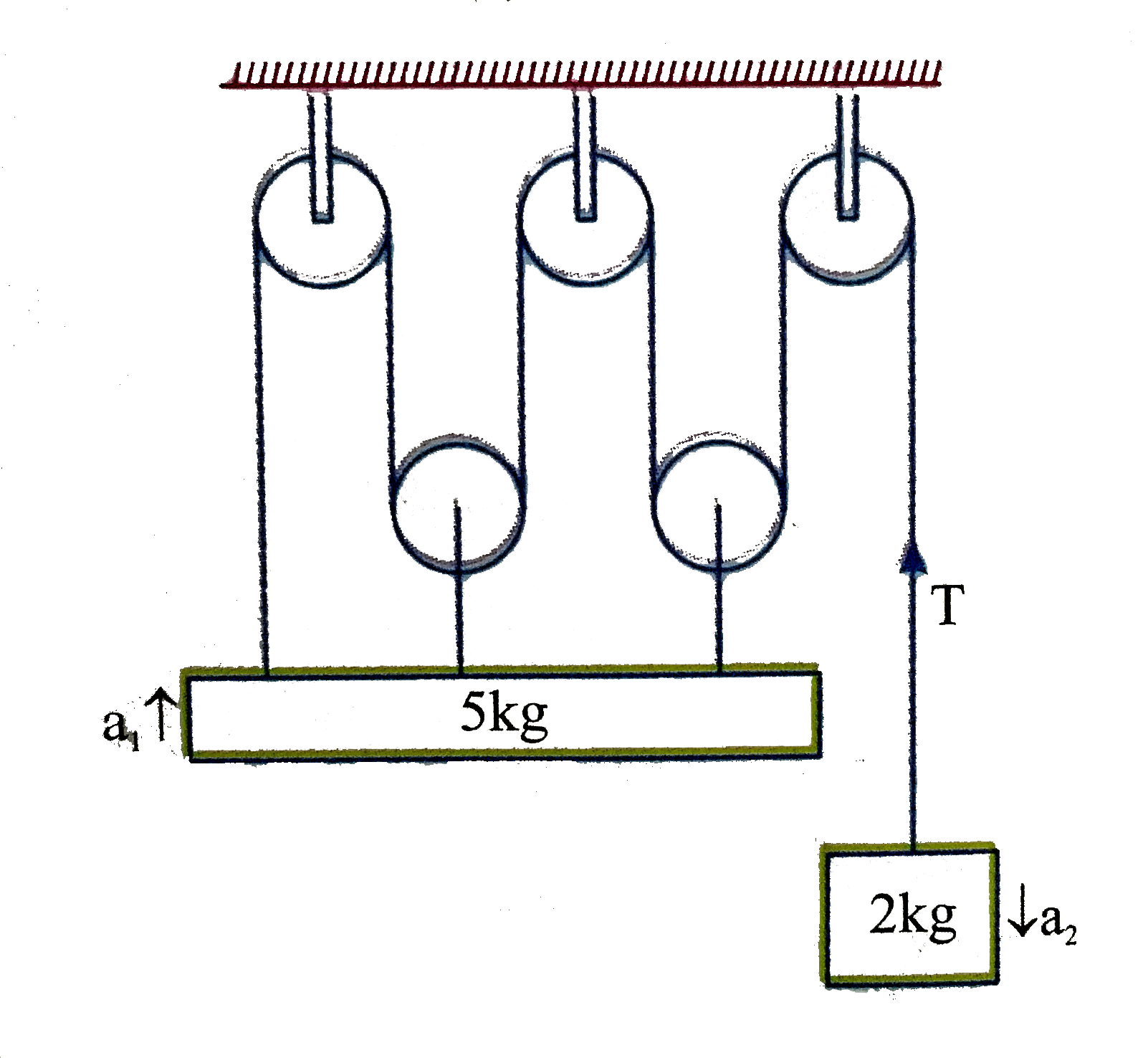 .
.
Topper's Solved these Questions
- NEWTONS LAWS OF MOTIONBOOK - NARAYNACHAPTER - NEWTONS LAWS OF MOTIONEXERCISE - PASSAGE TYPE QUESTION
6 Videos
- NEWTONS LAWS OF MOTIONBOOK - NARAYNACHAPTER - NEWTONS LAWS OF MOTIONEXERCISE - INTEGER TYPE QUESTIONS
23 Videos
- MOTION IN A STRAIGHT LINEBOOK - NARAYNACHAPTER - MOTION IN A STRAIGHT LINEEXERCISE - Level 2 H.W
29 Videos
- OSCILLATIONSBOOK - NARAYNACHAPTER - OSCILLATIONSEXERCISE - EXERCISE - IV
41 Videos
Similar Questions
On the figure shown two blocks each of mass 2 kg are connected though a massless inextensible string, which posses over a frictionless pulley. The coefficient of friction between any two surface is μ=0.1. Find the acceleration of the blocks.
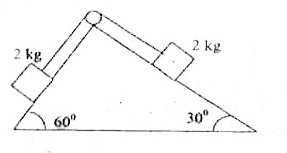
View SolutionTwo blocks of masses m and M are connected by an inextensible light string . When a constant horizontal force acts on the block of mass M. The tension in the string is

View Solution
Knowledge Check
A block A of mass 3kg and another block B of mass 2kg are connected by a light inextensible string as shown in figure. If the coefficient of friction between the surface of the table and A is 0.5 What maximum mass C is to be placed on A so that the system is to be in equlibrium
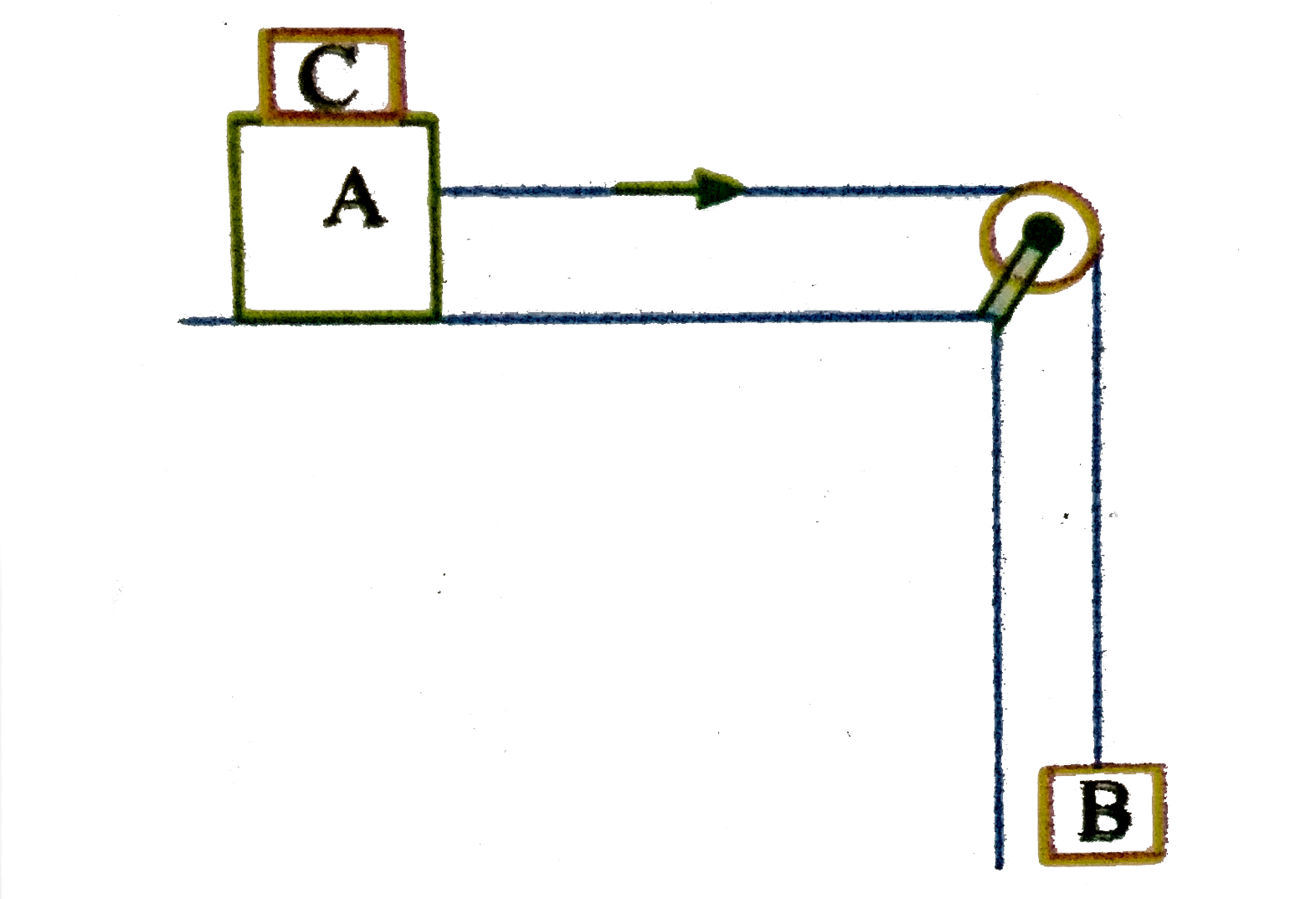 .A3kgB2kgC1kgD4kg
.A3kgB2kgC1kgD4kgA block A of mass 3kg and another block B of mass 2 kg are connected by a light inextensible string as shown in figure. If the coefficient of friction between the surface of the table and A is 0.5. What maximum mass C is to be placed on A so that the system is to be in equilibrium ?
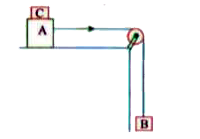 A3kgB2kgC1kgD4kg
A3kgB2kgC1kgD4kgTwo point masses are connected by a light intextensible string are lying on a frictionless surface as shown in figure. An impulse of magnitude 10kg−m/s is given to 5kg block.
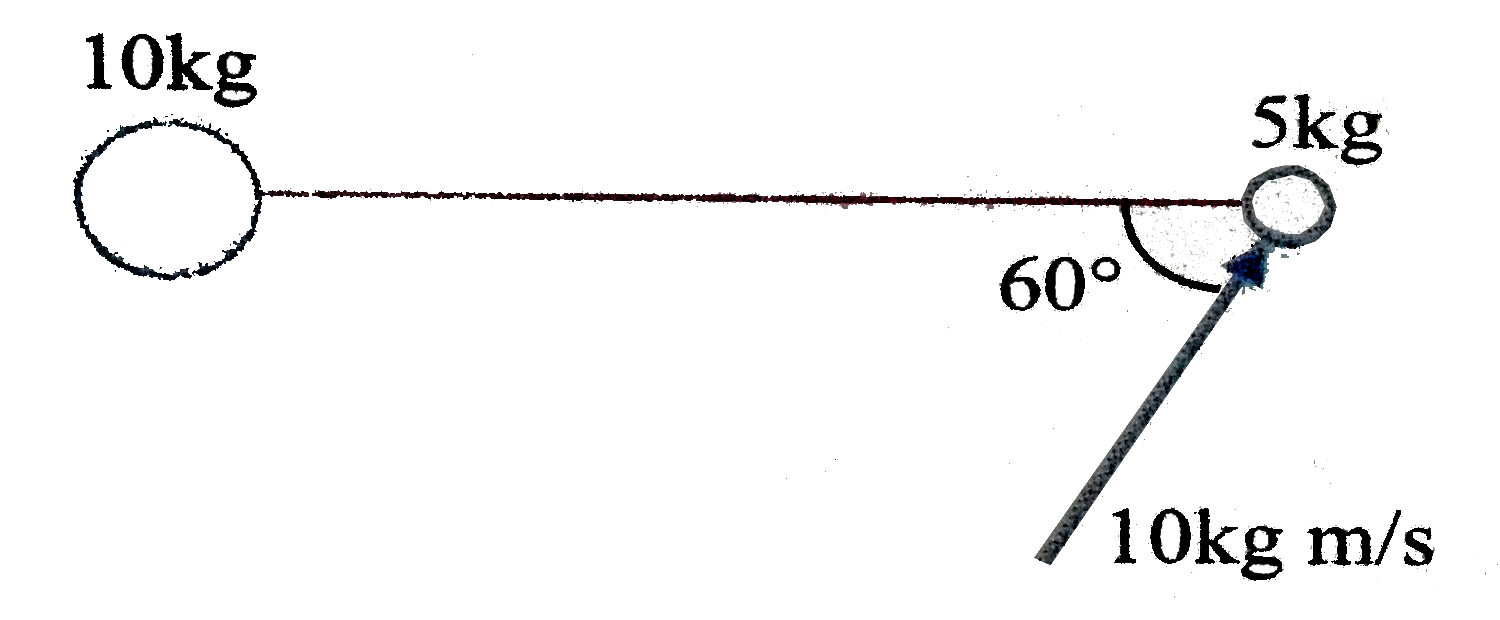 AVelocity of 10kg block immediately after impulse is given 13m/sBVelocity of 10kg block immediately after impulse is given 2m/sCSpeed of 5kg block immediately after impulse is given √289m/sDSpeed of 5kg block immediately after impulse is given √289m/s
AVelocity of 10kg block immediately after impulse is given 13m/sBVelocity of 10kg block immediately after impulse is given 2m/sCSpeed of 5kg block immediately after impulse is given √289m/sDSpeed of 5kg block immediately after impulse is given √289m/s
Two blocks of masses 5kg and 2 kg are initially at rest on the floor. They are connected by a light string. Passing over a light frictionless pulley. An upwards force F is applied on the pulley and maintained at a constant value. Calculate the acceleration a1 and a2 of the 5-kg and 2-kg masses, respectively, when F is (take g=10ms−2 )
(a) 30N, (b) 60N , (c) 140N
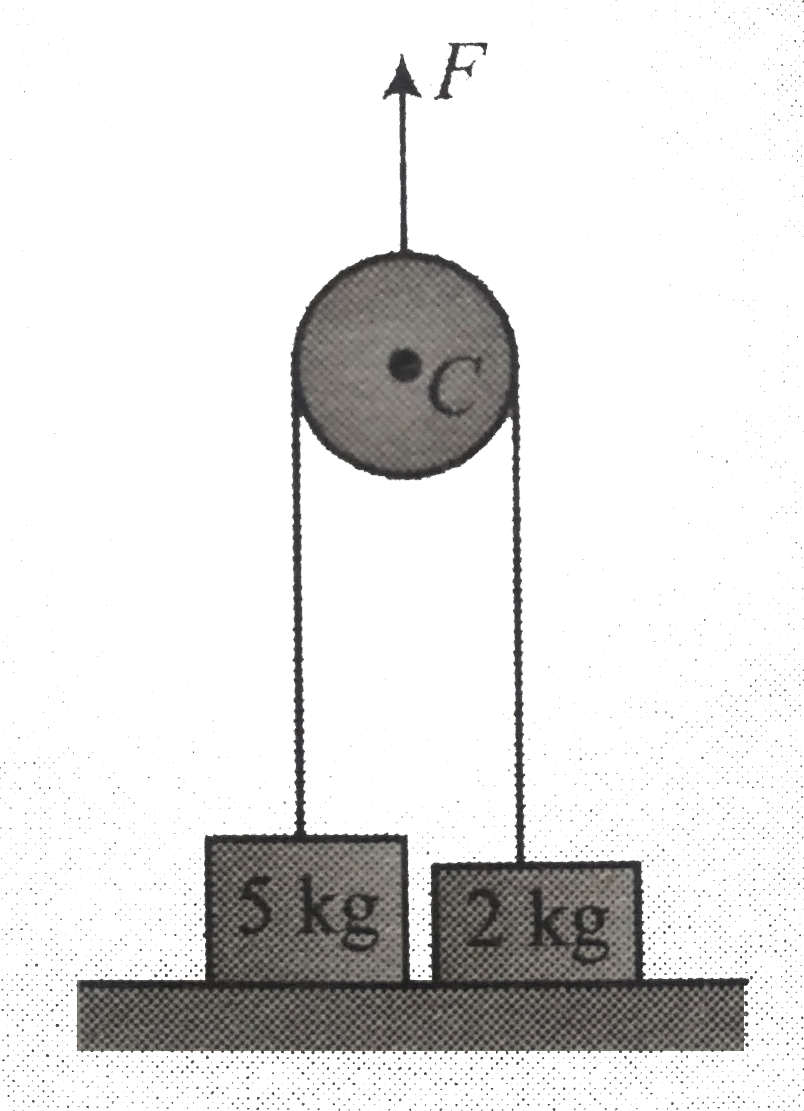 .
.
View SolutionTwo masses 6 kg and 4 kg are connected by massless flexible and inextensible string passing over massless and frictionless pulley.The acceleration of centre of mass is (g=10ms^2)
View SolutionTwo blocks of masses 3 kg and 6 kg are connected by a string as shown in the figure over a frictionless pulley. The acceleration of the system is
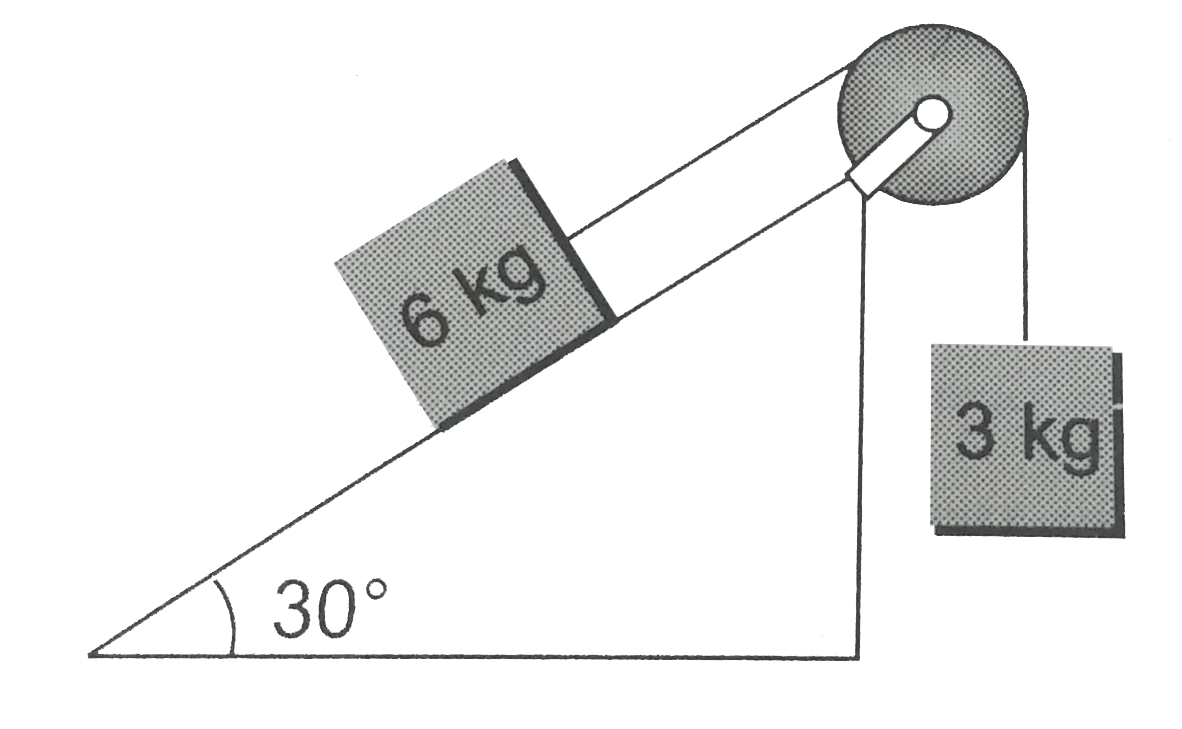
View SolutionTwo blocks of masses of 40 kg and 30 kg are connected by a weightless string passing over a frictionless pulley as shown in the figure.
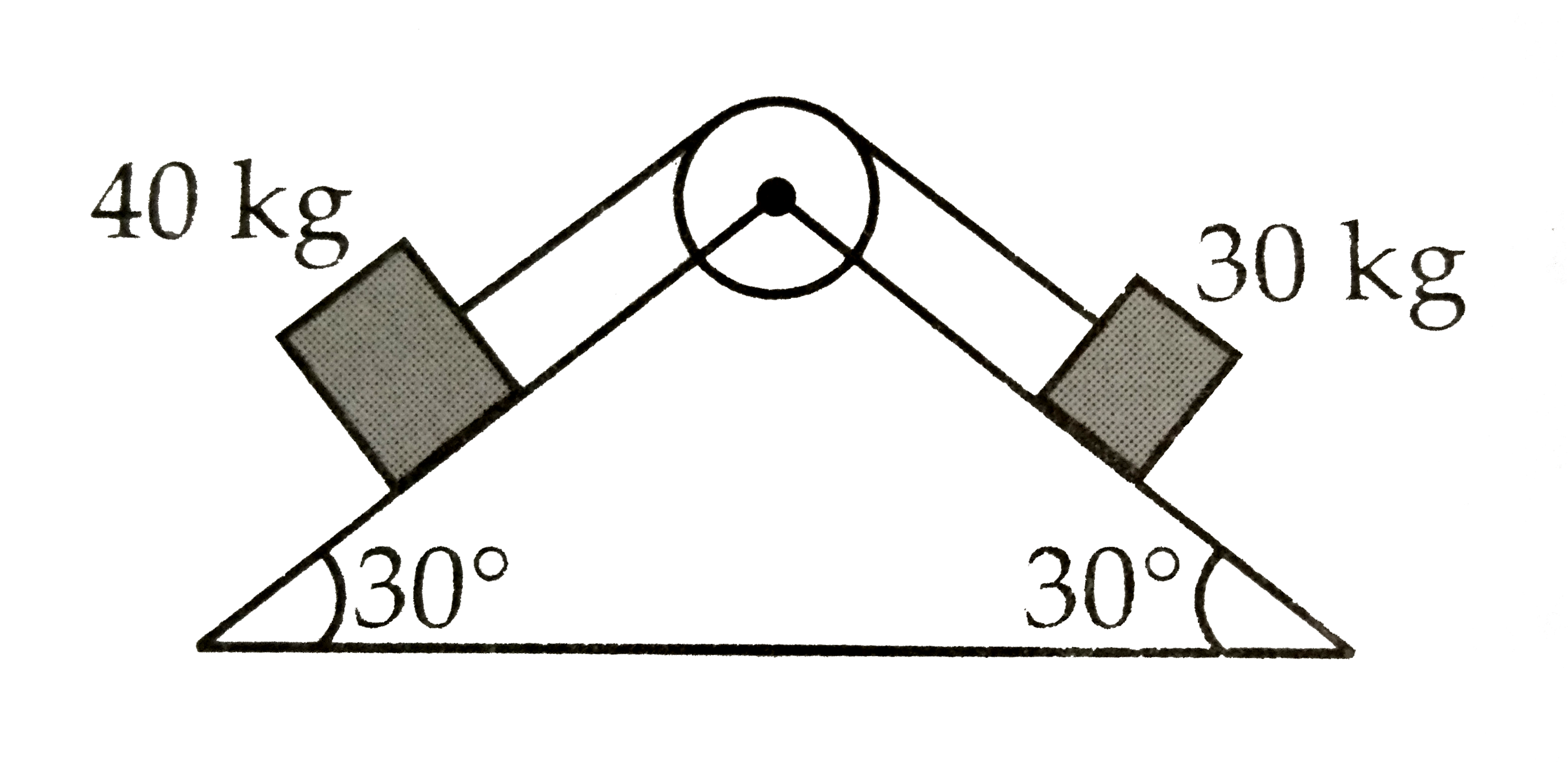
View SolutionTwo identical blocks A and B each of mass 2kg are hanging stationary by a light inextensible flexible string, passing over a light and frictionless pulley, as shown in Fig. A shell C of mass 1kg moving vertically upwards with velocity 9m/s collides with block B and gets stuck to it.
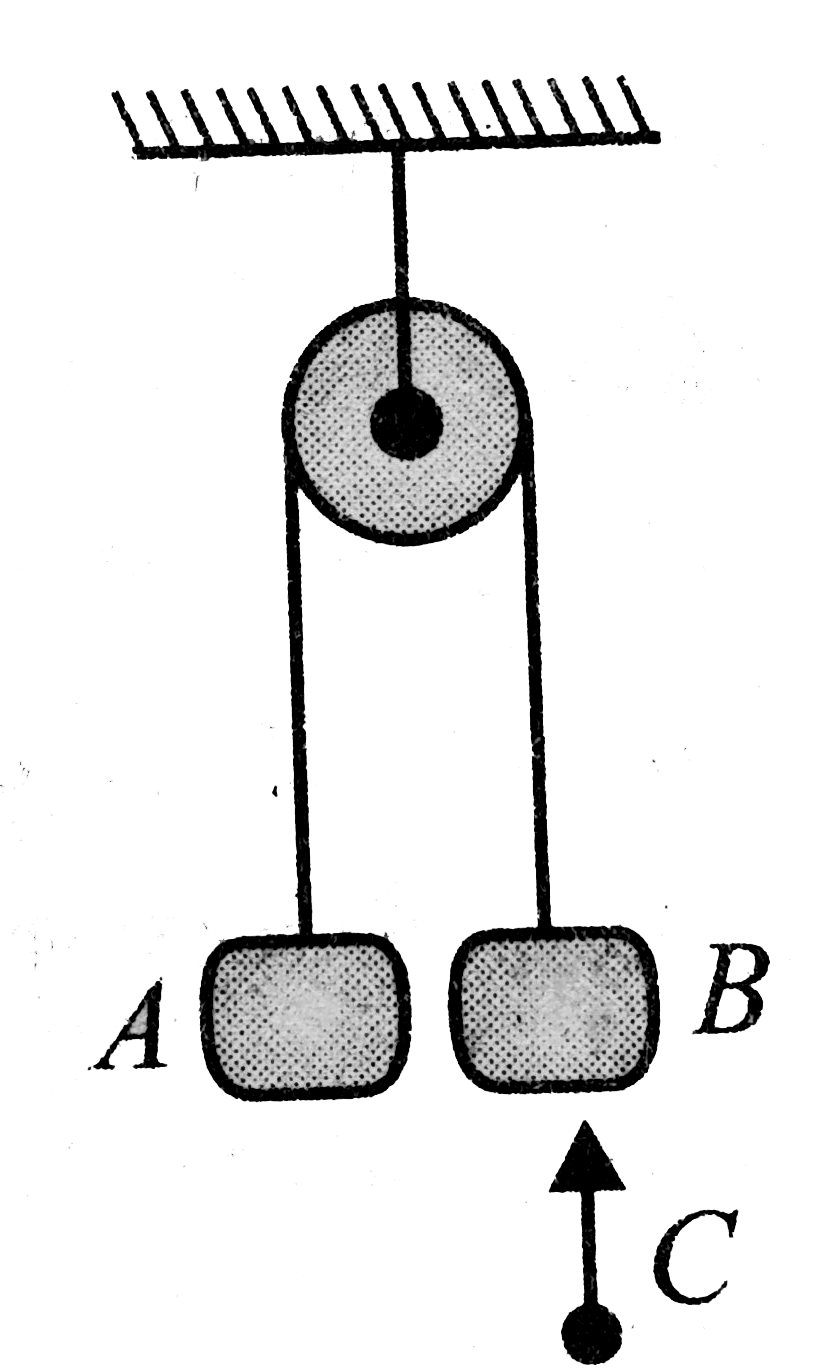
Calculate the time after which block B starts moving downwards.
View Solution
